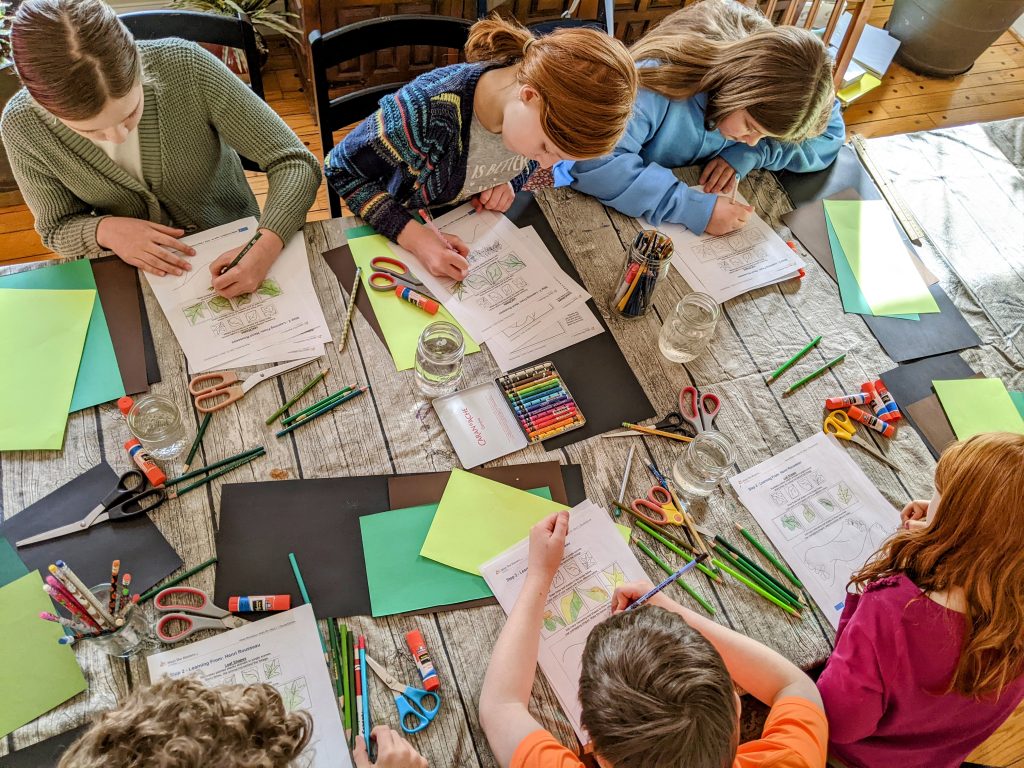
Art class is a favorite curriculum area for a lot of children, both homeschoolers and public schoolers. Since I am not an expert in the creation of art, art history, or even art appreciation, finding a good curriculum has been key to my ability to teach art.
In my 10 years a homeschool teacher I have learned that there is no one-size-fits every family. And there are certainly enough art curriculums to suit every family’s unique art needs. In short, there are many good art curriculums* and materials! Probably hundreds that I’m not aware of. These are just the ones that we have tried and that have worked well for us over the years.
*Note: In American English it is correct to say “curriculums” or to use the Latin plural form “curricula”.
Essential characteristics of a homeschool art curriculum
Again this is my non-artist opinion, just based on our experiences!
1. HIgh quality art supplies
Children are so incredibly creative. For every day crafting they can use toilet paper tubes, cotton balls, and Elmers glue, but not for art class. Give them good quality art supplies and they will love art and create beautiful things! By high quality art supplies I mean things like artist paint brushes, oil pastels, watercolor crayons, watercolor sketch paper, charcoals, and real oven fire clay. There’s no quicker way to make kids dislike art than by giving them mediocre colored pencils and waxy crayons. I recommend purchasing materials from art suppliers like Dick Blick and Utrecht (if it’s within your budget).
Amazon also has good quality art supplies if you look carefully. A few examples of supplies that have worked well for us are:
- These watercolor crayons are excellent!
- Tempera paints – we go through a lot of paint for art projects and this set is a bargain.
- Paint brushes and palettes – this set has lasted us a long time and been of surprisingly good quality for the price.
- Oil pastels – we used this set for several art projects. As with most of these supplies, they are best used under close supervision with children under 10. Both soft chalk and oil pastels are extremely hard to clean off of upholstery… ask me how I know! Ughh.
“You get what you pay for” holds true for art supplies. Pay for a few good quality art supplies and they will work beautifully and last a long time.
2. Art Appreciation
I hope to instill the level of art appreciation in my children that I was never given a chance to develop until college. I would like them to recognize the names of twenty or thirty of the most famous historic artists. Ideally, I would like them to know something about the style of each famous artist.
Playing with these Montessori art postcards is a blast!! I love this program for art history and art appreciation! It’s possible to find these from used booksellers and on Ebay (which is where I got my set). You will definitely want a copy of the “How to Use Child-size Masterpieces” book as well. The other books are just the postcards without any instructions on how to use them.
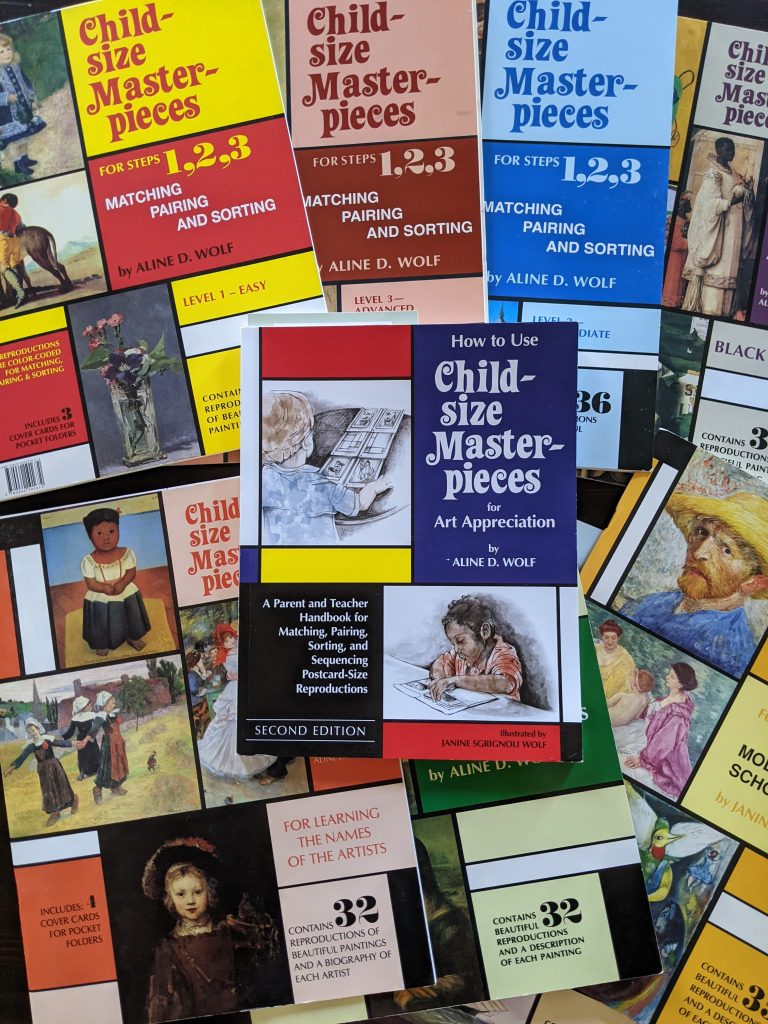
3. Art History
“Getting to Know the World’s Greatest Artists” is a series of art history books that my children LOVE. The font is fairly large and each book includes many comics that the younger children enjoy looking at while I read aloud. They also include several illustrations of each artist’s famous paintings. You can find these on Amazon though some of them are hard to come by– check your favorite used books sellers for those.
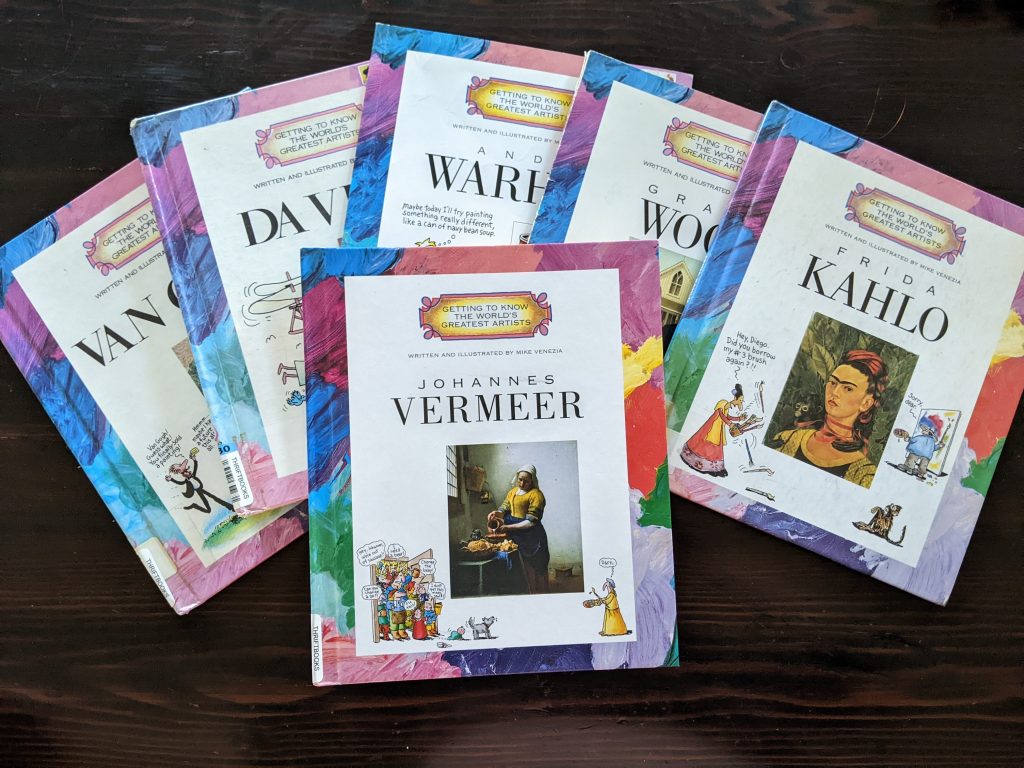
3. Hands on Projects
Art history lessons without a hands on project is a recipe for groans and whining about art class. The best art curriculums include a little of both: projects that allows children to mimic a great artist’s particular style or technique and a thorough art history lesson. I like this “Art Lab” book, but I wish it had a lot more art history information. It focuses on current artists and trends as opposed to classical art history. It might work well for a child already very familiar with master artists, who is looking to explore more modern styles.
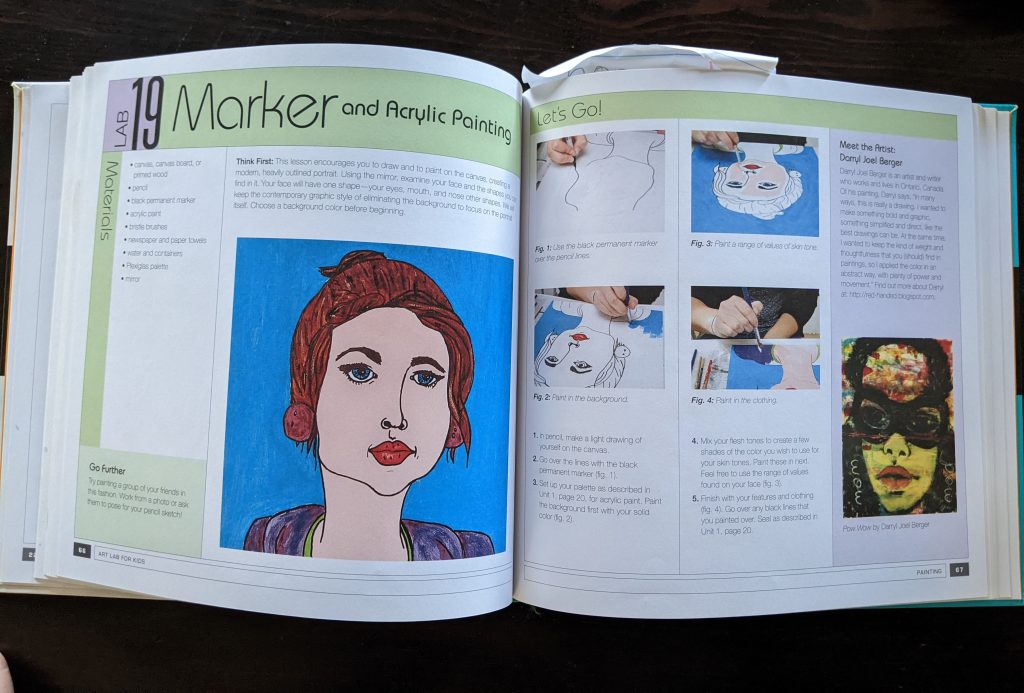
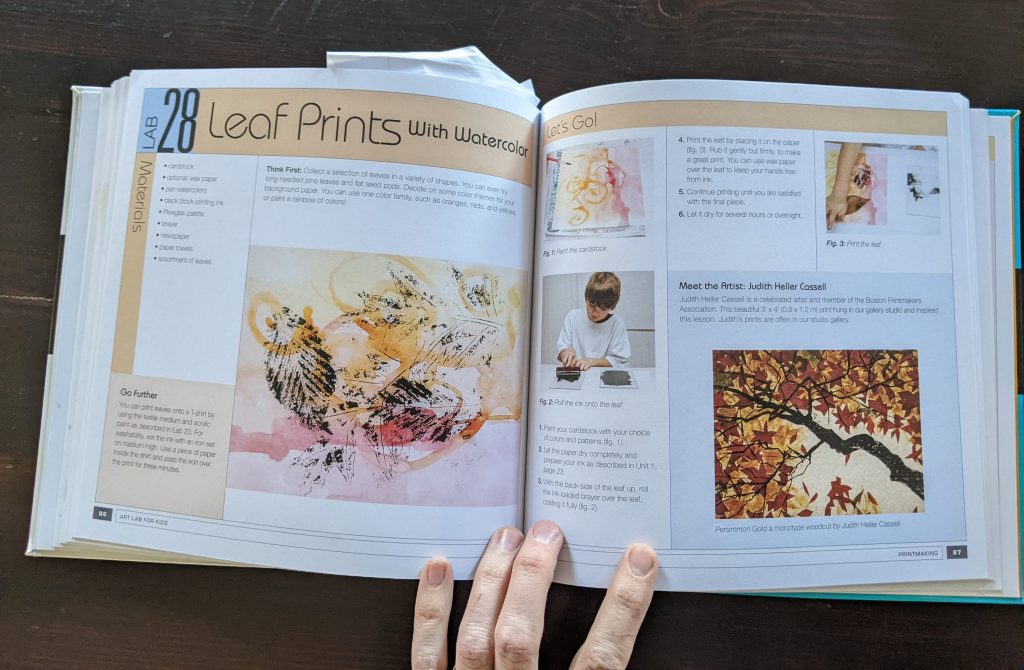
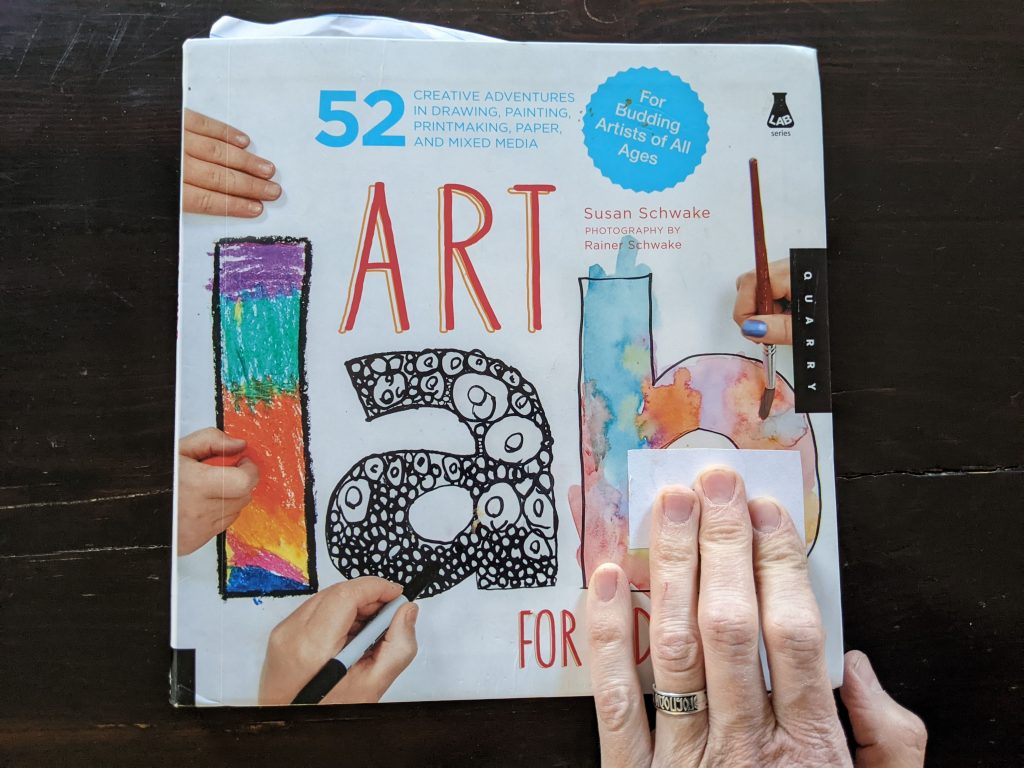
Our Favorite Art Curriculum
Meet the Masters for homeschoolers is our favorite OVERALL homeschool art curriculum to date. It’s a little clunky and old school, but I find that it does a great job incorporating art history, art appreciation, and a hands on art project succinctly. I also like that it’s open and go — other than ordering the materials on the supply list.
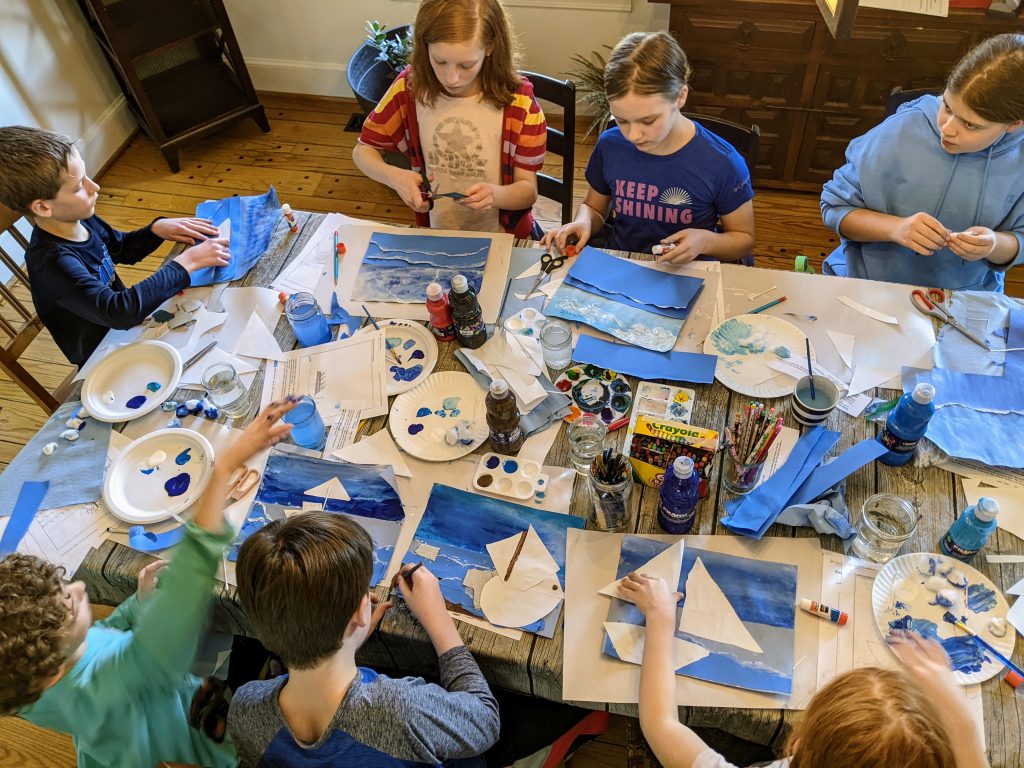
The entire curriculum includes 7 units (A through G) and each unit includes 5 artists with one lesson and powerpoint for each of them — a total of 35 artists that you can learn about. There are also three different age level options for the lessons. We have always opted to do the lessons that correspond to our eldest child’s age even though all the younger siblings listened in and did the project as well. Even the lessons in the oldest age group (10 and up) have not been too challenging for my 6 year old.

Each Meet the Masters lesson includes :
- A powerpoint and script to read aloud as you click through (Art history and appreciation). The powerpoint tells about the artist’s life and times, the development of their particular style, examples of their works, and includes a brief quiz.
- An art project based on the master artist’s style. The art project includes a detailed supply list and instructions. It also includes a worksheet or two for practicing aspects of that art style before delving into the main project.





I am not affiliated with any of these art curriculums. I hope that reviewing them in this way helps some of you fellow homeschool parents find what you are looking for!
BTW, Are you also interested in improving your family’s food security? If so, check out my pantry inventory workbook. It will help you organize, assess, and add missing items to your household’s long and short term supplies.


Leave a Reply